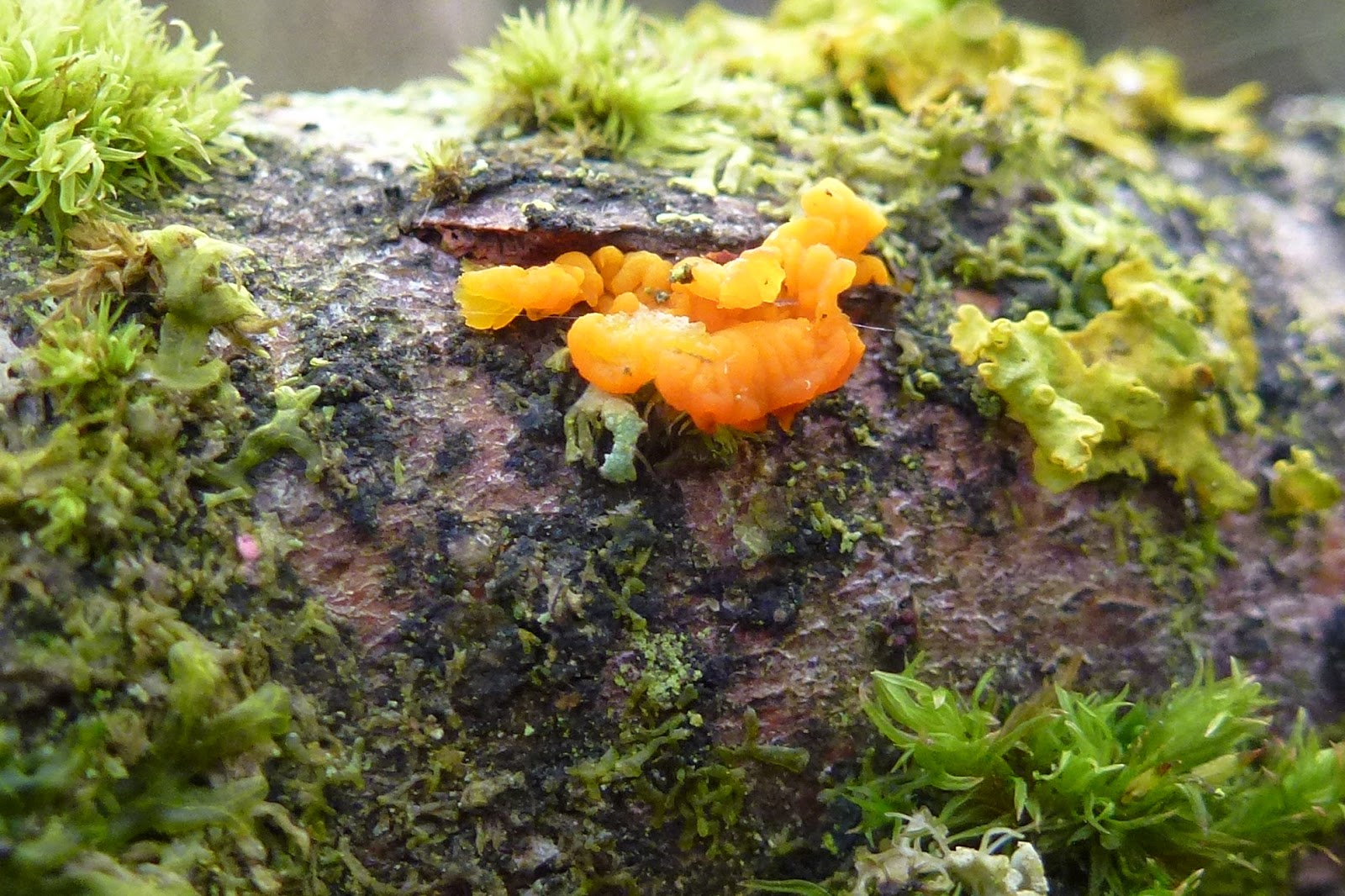Chris Durdin, NWT Thorpe Marshes
Words that came to mind on Monday’s walk around NWT Thorpe Marshes were ‘bleak’ and ‘mid-winter’. To say there was nothing to see would
overstate it: a sparrowhawk dashed through as the group gathered by the railway
bridge; a Cetti’s warbler sang; the odd snipe zigzagged away from unfrozen
pockets within the marshes. But overall, you couldn’t help but look forward to
spring.
 |
| Yellow brain |
At least that was true until we reached a patch of wet wood.
I may be the regular guide here but there’s still lots to learn. I know I’m not
good on fungi, so it was great to have participants on the regular monthly walk
who do recognise them… and in a few minutes found and named seven species. Velvet
Shank, Hairy Curtain Crust, Oyster Mushroom, Blushing Bracket, Southern
Bracket, Yellow Brain and Smoky Bracket… none is unusual, but wonderful names,
and quickly added to our knowledge of what’s here.
There were plenty of birds on the gravel pit, St Andrew’s
Broad, which certainly helps to give the reserve year-round interest. As
naturalists we often seek what’s unusual, at least locally: on Monday that was
a group of three wigeons.
Gadwalls are a more reliable sighting here, and there are
about 100 of late. This dabbling duck likes to feed by waiting for diving coots
to surface with waterweed and then snatching it. But with only a dozen coots, bullying
opportunities are limited and they must feed for themselves. With a close view
of a gadwall, perhaps through a telescope, much of the bird’s apparently dull, grey
plumage is revealed as rather dapper black and white mottling. Flashes of white
when loafing or swimming expand when gadwalls flap or fly: the distinctive
white speculum, part of the trailing edge of the wing. Not that identification at
Thorpe Marshes is a challenge: mallards all but disappear here in winter.
The NWT Thorpe Marshes Wildlife Report for 2014 is now
online at on www.honeyguide.co.uk/thorpemarshes.htm.
There’s also a link there to a gallery of photos of the reserve’s many
dragonflies and damselflies, and pictures of the first-winter Mediterranean
gull that’s on nearby River Green by Yarmouth
Road, Norwich.

No comments:
Post a Comment